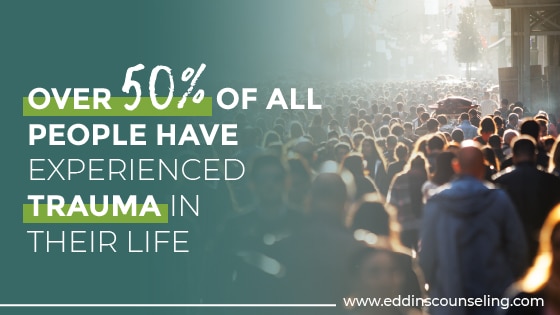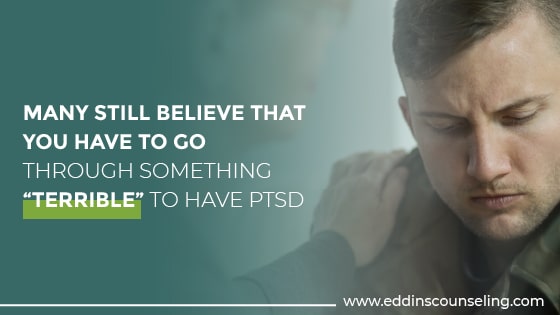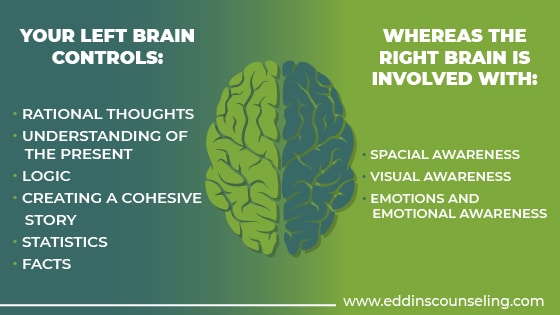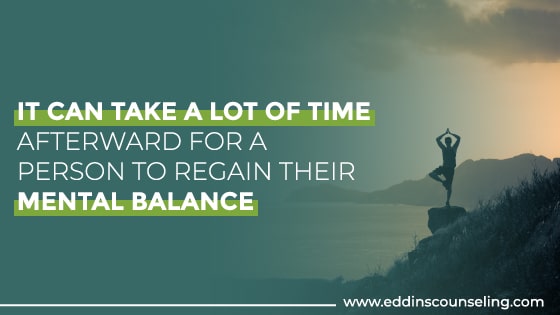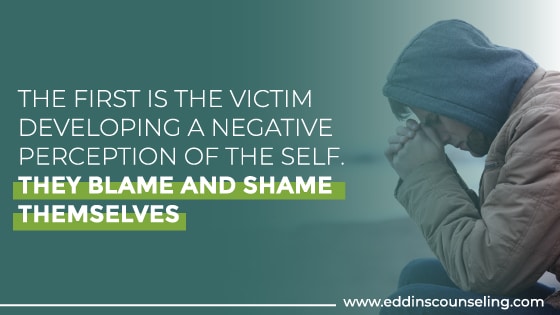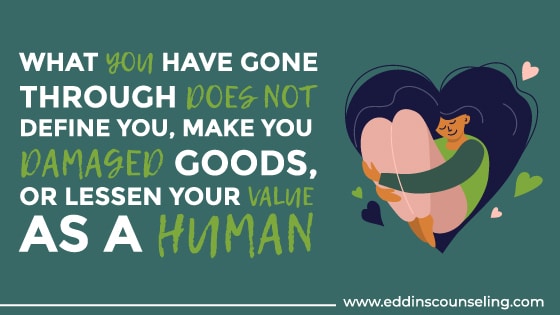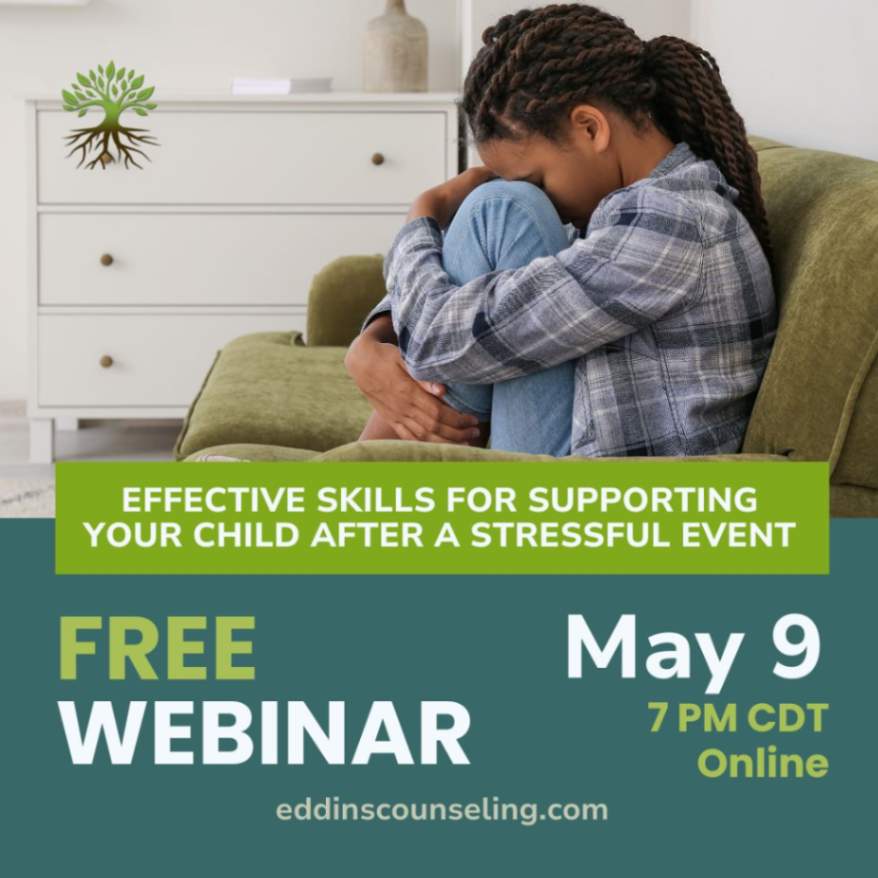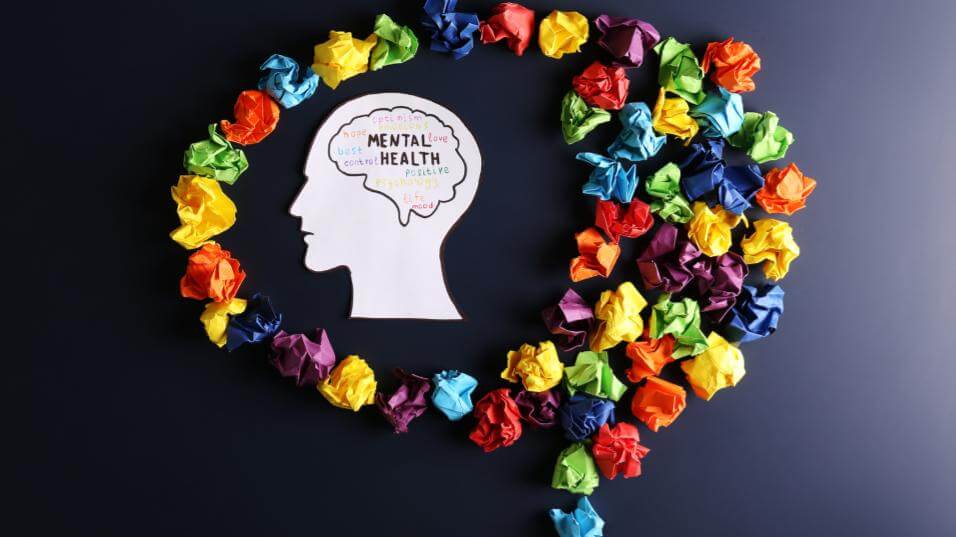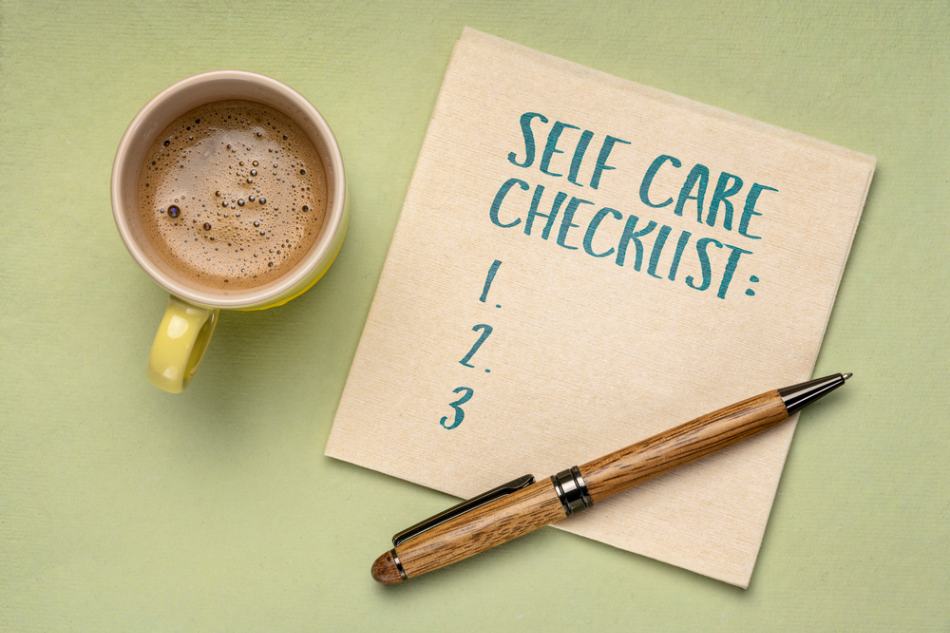August 9, 2021
Webinar: The Emotional & Physical Impacts of Trauma Symptoms & How to Heal
Written by Sara Lane
Posted in Emotional & Mental Health, Trauma, Grief & Loss, Webinars and with tags: PTSD/Trauma, trauma symptoms
You or someone you know has been through something horrible.
It was so bad that it left a lasting impression on you, and no matter how hard you try, it won’t leave you alone. Or, at least, that’s what it feels like.
However, experiencing physical and emotional trauma is more common than we would like to admit, and everyone’s situation feels unique to them. It feels as if no one else could have possibly gone through something so wrong, but this is rarely the case.
Thoughts like this just isolate you and, ultimately, make the situation incredibly difficult to talk about.
Regardless of what happened to you, you are not alone. We promise, but we do understand that that is what it feels like.
So, we will take “trauma” and pick it apart, hopefully making it a lot less scary and maybe even a little easier to discuss. We will cover
- what trauma is
- some statistics relating to the occurrence of trauma
- PTSD and C-PTSD
- how this can all rule your life
- And most importantly how you can heal.
What is Trauma?
The American Psychological Association defines trauma as:
emotional response to a terrible event like an accident, rape or natural disaster,
This may seem vague, but it needs to be. A “Terrible event” can mean anything, but the “emotional response” is the trademark of trauma.
Many people in this world have and continue to go through some sort of event that leaves them traumatized. But no matter how common it is to experience trauma symptoms, it’s not any easier to talk about.
Trauma is a big word with a lot of baggage attached, including what you went through, how it changed you, and what it left with you. Physical or emotional trauma can turn your world upside down and very confused about which way is up.
Emotional trauma does that. It builds walls around us that are too painful to touch, so we often let them isolate us, decaying relationships, causing further emotional damage, and leaving us feeling worse than ever before.
The thing is, no matter what kind of trauma you have endured, you are not alone. Here is why.
Trauma Statistics
Research has shown us that over 50% of all people have experienced trauma in their life, and at least 7-8% of those people have Post Traumatic Stress Disorder.
And it is understood that of those individuals who have PTSD, over 60% are children who have been abused (according to Child Protective Services), 10% are people who have been sexually abused, and 18% are people who went to war and served.
The issue lies mainly with the number relating to the military because, more often than not, people who served in war don’t report their mental health issues in or outside of the service.
It’s more likely that officials don’t write cases, or they themselves were abused, and they don’t want to report it. Either way, take any statistics regarding military members with a grain of salt.
Overwhelmingly, across society, very few people report it. And sadly, that doesn’t change the prevalence of trauma in our communities; if anything, it just means that data is underrepresenting it.
Post Traumatic Stress Disorder
The DSMMD or the Diagnostic Statistical Manual of Mental Disorders says that PTSD occurs in someone exposed to some sort of traumatic event, either related to death or a trap and threatened with death.
Also, PTSD can occur due to a threat of sexual violence, a severe injury, or a threat to your life. Both of these things can happen in many different ways and are very, very scary.
Even with this Manual telling us all the possible sources of PTSD, many still believe that you have to go through something “terrible” to have PTSD, and they have probably never heard of C-PTSD.
But how do we objectively judge what “really bad” is? Most mental health professionals would say that you can’t do that. If we determine the standard this way, no one will ever be “allowed” to say, “yes, I have PTSD and I need help with it.”
Someone will come up and tell them, “sure, what you went through was bad, but what I went through was worse!” And this will repeat over and over again until no one on the planet is allowed to think they have PTSD, see a trauma therapist, and get help for a genuine problem.
So, don’t be a gatekeeper to yourself.
PTSD and How It Can Affect Anyone
Post Traumatic Stress Disorder is not something you can put on a scale and weigh its importance, it’s too obscure, and it looks very different from one person to the next. A person can even experience trauma through someone else.
For example, a first responder can witness someone have the worst 24 hours of their life, and it’s as if it happened to you. Sadly, this is very common for anyone that professionally handles traumatic situations, such as doctors, therapists, and any sort of first responder (police officer, firefighter, dispatcher or paramedic).
Another situation where PTSD can occur is in the home. Say a wife finds out that her husband is having an affair. She is devastated and ends up having PTSD-related consequences.
It can happen to anyone in any situation.
Complex Post Traumatic Stress Disorder
Have you ever heard of this? It’s okay if you haven’t. Often, we think of trauma and stress culminating only in PTSD because it’s used in movies and pop-culture references, but really, there is much more than that.
C-PTSD is what occurs when trauma victims had to endure over a long period of time.
These types of situations include prisoners of war, sex trafficking victims, those not freed by their rapist after the assault, children abused through childhood or even neglected, and domestic abuse situations.
It means they couldn’t remove themselves or run away from the threat, but the characteristics of the two stress disorders are very similar.
For example, a person is abused by a parent for 10 or 15 years, or it’s someone who experienced violence from their partner for 10 or 20 years.
The amount of years or months isn’t necessarily the focus of C-PTSD; it’s more about how the victim of this threat was given no relief for a period of time longer than one instance of trauma, as would be the case with a car accident or sexual assault.
Similarities
Either way, people with PTSD or C-PTSD have a set of similar circumstances. Firstly, they can’t integrate, which means they can’t add their experiences to who they believe themselves to be.
There is a split between their past and present selves. Additionally, their brain doesn’t process their experience because it’s too difficult. They end up losing a part of their memory which means only a feeling remains.
There is only pain left, and they can’t integrate, making these gaps almost parasitic on the victim’s mind. They just feel the pain.
Trauma Symptoms & the Sides of Your Brain
Your left brain controls:
- Rational thoughts
- Understanding of the present
- Logic
- Creating a cohesive story
- Statistics
- Facts
Whereas the right brain is involved with:
- Spacial awareness
- Visual awareness
- Emotions and emotional awareness
For example, when something makes us sad, we cry, and our right brain is relating the sounds, the physical sensations, and the emotions to this event. At the same time, the left brain works this event into your overall experience, creating some sort of meaning.
Another example would be walking on the street and smelling your mother’s perfume. As you walk, you begin to think of her and the experiences you had with her, and physically you may feel warm and nurtured.
Your Brain’s Threat Response
Your brain is very powerful and is much more involved in the physical body than we like to believe. So, in times of danger, you have a response to threats.
To demonstrate, consider a car accident:
- You know you are about to get into an accident on the road, and your left brain shuts off.
- Your brain knows that this is not the time to process or think about what might happen.
- You have little control over this because it is an automatic response.
The consequence is that when we are in danger, we will make generalized conclusions and take action as there is no rationality at that point.
The Parts Involved with Trauma
Once you sense imminent danger, the amygdala says, “there is danger; this is not a drill,” and immediately gets help from the hippocampus. The amygdala then releases what are commonly called “stress hormones” to the rest of the body, beginning and fueling the fight or flight response.
Your blood pressure and heart rate increase, and we are ready to act.
Another emergency response that can be activated is called the freeze response. An example of this would be seeing a bear. You can’t fight, and you really shouldn’t take flight (because bears are chasers), but you can freeze.
Scientists have found that when this is activated, your brain releases endorphins equating up to almost 40 painkillers preparing you to deal with some level of pain, and your blood pressure drops just in case you bleed.
Trauma Symptoms & Their Effects
Each person feels uniquely attached to their experience with anything, whether a product, a place, or a traumatic event. We hold our journey in high regard because we know it best.
In the same vein, trauma, traumatic events, and all related feelings are very personal. No one can compare their trauma to another’s because it feels different for everyone.
There is no way to measure and then say you have gone through double the trauma and feel double the pain. That’s not how it works.
Trauma symptoms are complicated, and their effects are complex.
Hypersensitivity As A Trauma Symptom
Suffering through a traumatic event makes people hypersensitive to perceived danger meaning the danger could be there, and even if it isn’t present, it feels like it is.
To put it another way, imagine a house with an alarm system that detects everything, even butterflies outside. After a while, everything seems like a burglar, and you get used to being on alert.
You might say that you’ll just stay awake a little longer to make sure it’s nothing. Very quickly, you’ll become exhausted because there will always be butterflies, and in something like a pandemic, the alarms are even louder.
There are many triggers involved because everything, even simple things, can make you feel incredibly unsafe.
Your nervous system is soaked in fear.
Reoccuring Trauma Symptoms: Nightmares, Memories, Flashbacks
Most of the trauma symptoms are intrusive, but possibly the worst offenders are nightmares, memories, and flashbacks. These are exciting and disturbing memories of traumatic events, and when triggered, it’s like our bodies are there.
When this happens, your blood pressure spikes, and stress hormones are released as if it is really happening again, which merely adds to the mounting stress you feel. While this is happening, you have irrational thoughts because, as mentioned before, that part of your brain shuts off. So, when triggered, a person will act without understanding the consequences.
One concept that is relatively new regarding this trauma symptom is that the brain is lazy. This means that your brain is trying to heal and process through these nightmares, and within flashbacks, you’re brain stops and says, “let’s work on this.”
The laziness part comes from now wanting to reopen and examine these memories unless it’s convenient, and oddly enough, these moments are the most suitable.
After the Flashback
To be sure, flashbacks are draining. It can take a lot of time afterward for a person to regain their mental balance, and it takes a lot more energy than someone who hasn’t experienced trauma, for example.
Another way to look at this is to look at a couple in therapy. One partner has trauma, and the other does not. One can get triggered by their partner in an argument, and it’s difficult for them to acknowledge that an older experience is triggering them.
It’s equally as difficult for the other partner to recognize at that moment that they are the trigger.
Memory Gaps & Concentration Issues Can Be Trauma Symptoms
Due to the continuous pumping of stress hormones in their nervous system, there can be impacts on memory. This can look like a trauma victim forgetting the whole occurrence after it’s happened. Their brain is pushed to a point where remembering isn’t possible.
Along with memory gaps, they can have a reduced attention span. It may be difficult for their brain to absorb new information or merely be present, which is often a cause of frustration and anger for the trauma victim.
Medical Issues As A Form of Trauma Symptoms
Our bodies remember, too. Every experience we have, our bodies are right there with us, so it’s not surprising that there will be physical ramifications of emotional trauma.
- The immune system may be repressed. You feel sick often, if not all the time. Your immune system is under attack because you constantly feel that you are under attack.
- Your sleeping habits will be messy because it will be challenging for your body to shut off and allow rest because of the sense of imminent danger.
- Headaches are a common symptom. They are often called stress or pressure headaches.
- Physical pain in and throughout the body is another telltale sign of trauma.
- Weight gain or loss can also occur in trauma victims. Gaining is more common in victims of sexual violence because they may feel the need to shield their bodies.
The Emotional Effects of Trauma
The past has deeply hurt you, the future is unknown, and anything you can’t monitor is scary, and you feel anger.
To put it differently, imagine the alarm is always going off in the house.
People with trauma often confuse what happened in the past with what is happening today, and when they experience new things, it can be stressful. New items can be dangerous and can’t be trusted, which is generally understandable.
It’s normal to feel some apprehension. But trauma can leave your sense of trust damaged. You feel very little security where so much was once provided. And it’s not easy for you to bring yourself to trust others.
An excellent example of this would be a child abused by their parents. Parental figures are supposed to keep you safe and love you. If that never happens, their sense of trust and people will be incredibly limited.
In the case of rape, once they are ready to move on, intimacy issues are likely to arise.
Trauma Symptoms Specific to C-PTSD
Remember, the difference between PTSD and C-PTSD is the amount of time the victim endured the abuse. So, for the example of a child abused for, what is essentially their entire childhood by their parents, there will be different traumatic results due to the extended time period.
Shame and Blame
The first is the victim developing a negative perception of the self. They blame and shame themselves. Over time, the child rationalizes this horrible pattern by saying, “it has to be me” because it is just too painful to fathom the fact that your parents don’t love you or that they are doing this. After all, they are inherently cruel.
Another example here would be the person being abused for years and years by their partner. They might say, “they only hit me because I didn’t have the laundry done; I deserved it.” It’s almost easier to blame themselves than look head-on at the gravity of the situation they are in.
Interpersonal Sensitivity
We all watch others for cues during conversations and activities. But while in long-term abusive situations, those cues can mean entirely different things.
Consider the child who the parent abuses. That child knows that there is hitting when the parent is in a bad mood, but if they are in a good mood, there is no pain and maybe even some food.
As time goes on and the child becomes more and more aware, they will become experts on their abuser’s cues, and that awareness doesn’t leave them when the abuse ends. It will be difficult for the survivor to separate the present value of those same cues from other people from the past.
Longer Time to Recuperate From Trauma
Just like progress at the gym or learning a new skill, healing, too, takes time. When you add PTSD to the mix, it adds a good deal of time. But when you add years of abuse and Complex PTSD, there is no longer a separation between persons’ lives and the trauma they endured. They are the same, which makes healing a longer and more complicated process.
Maladaptive Trauma Coping Mechanisms
When someone has experienced this level of trauma, they need some form of relief. The most common types of relief found in clients with C-PTSD include:
- Avoidance of people and places, whether that be places that remind them of the trauma or places that cause them an undue amount of stress. Some examples of this include crowded areas, dark areas, and empty/isolated areas.
- Not discussing the trauma isn’t always a bad thing if you don’t trust those you speak with. The issue comes from those you can trust being shut out or locking the traumatic events away and pretending they never happened.
- Abusing substances or activities such as drugs, alcohol, food, social media, or other hobbies as a way to not deal with what happened.
- Emotional numbness that detaches you from beloved interests.
- Detachment and dissociation from the pain (emotionally, physically, or mentally).
Complex Post Traumatic Stress Disorder is powerful because it is born from powerful events. Trauma is complex no matter the scale, but we develop patterns over the years that are our responsibility to correct. C-PTSD and PTSD are often confused due to how much they share, but you must understand precisely how you got to this point in your mental health journey.
An Example of CPTSD & Its Trauma Symptoms
In Harry Potter, that boy goes through a lot, and he continues to go through a lot throughout the series. But there is a moment when he doubts himself in the face of all this trauma.
Harry says, “I just feel so angry all the time… What if after everything I have been through, something has gone wrong inside me? What if I am becoming bad?”
Sirius, his godfather, tells him, “I want you to listen to me very carefully, Harry. You are not a bad person. You are a very good person who bad things have happened to.” Harry Potter and the Order of the Phoenix (2007)
This is incredibly important to note. What you have gone through does not define you, make you damaged goods, or lessen your value as a human. And you certainly did not bring this on to yourself.
Accepting that a bad thing happened to you gives you space to invite in healing from emotional trauma, but shaming yourself for it will only trap you.
How to Healing from Trauma, PTSD, & C-PTSD
Everyone is different, and everyone’s trauma is different. And so, the amount of work it takes to heal depends entirely on the person. But don’t worry, healing is possible.
Most all trauma survivors learn how to find space before reacting to a trigger, taking a step back, and recognizing that they were triggered. You develop the skill of relaxing before responding.
Another concept that victims learn is that just because you heal doesn’t mean that you forget. Emotional trauma is also a physical experience.
If your goal is to “move on and forget,” you may be misleading yourself. Rather than having “forget” as the goal, focus on learning how not to let what happened control you and determine the course of the rest of your life.
So, as we go through the standard methods survivors use to find healing, remember that you are only human, and merely reading this is a step in the right direction.
There is no way to know what makes you feel better without trying it. Try what you can, but find a balance. Though there is no need to overwhelm yourself, don’t put off healing (it’s not worth it).
Here are 8 ways survivors can start healing from trauma.
1. Create a support network.
You need to feel safe and be able to relax. This may be in support groups which can be really cathartic because you have the opportunity to see, firsthand, that you aren’t alone. Or if you are not ready for a group setting you can start by meeting individually with a trauma therapist for trauma therapy and PTSD treatment. If substance abuse is involved, consider having a sponsor or adopting a pet to help you keep to a daily routine.
2. Find meaning.
You could try volunteering for an organization whose cause you greatly admire. There is also the option of working to help individuals that have suffered through similar events to you.
3. Mindfulness and meditation practices.
Research has found incredible benefits of having daily mindfulness practice in patients with anxiety, chronic pain, and immune issues. It activates the prefrontal cortex, which allows you to be less reactive and more rational.
4. Practice yoga.
It improves cognitive functions as it helps you cope, move, and decreases over-activity of the amygdala, which is critical for reducing the stress response. It also is believed to help you reconnect your mind with your body.
5. Breathing exercises.
There is a Buddhist philosophy that believes control of the breath is control over the self. So, if you feel triggered, using your breath is a quick and effective way to calm yourself.
6. Self-soothing techniques.
Sometimes, you can just hold your own hand when you feel triggered or put on your favorite sweater and watch your favorite movie. Finding healthy ways to soothe these intense feelings can be a very freeing experience because it puts you back in control of what you do and, ultimately, how you feel.
7. Journaling.
What we experience in our minds is often not even a tiny snippet of the whole picture. Journaling allows you to examine how you feel and gives you as much space as you need to do so.
8. Developing a healthy relationship with food.
Researchers are now discovering that your brain is very, very involved in what happens in your gut. So, creating a healthy, well-rounded, and enjoyable diet can significantly impact your mental health. Life is painful, but it is also wonderful. Healing from trauma is a part of that beauty. Just know that you aren’t alone in this.
Need Help Healing & Addressing Your Trauma Symptoms?
Start PTSD Treatment & Trauma Therapy in Houston, TX
Did you experience a traumatic event? Are you suffering from trauma symptoms that are interrupting your life? At Eddins Counseling Group we have PTSD and trauma therapists who can be there for you during this challenging time. Trauma therapy can guide you through the worst of times and is a sounding board through the best.
There is no need to walk this path alone, so don’t. Follow these steps to start trauma therapy and PTSD treatment in Houston
Other Counseling Services We Offer in Texas & Other States
Eddins Counseling Group offers in-person counseling in Houston, Montrose, and Sugar Land, TX. As well as online therapy in various states, including:
Our caring therapists offer a variety of counseling services. Such as LGBTQIA+ therapy, relationship counseling, and anxiety treatment. As well as career counseling, family therapy, OCD treatment, and so much more!
Grounding & Self Soothing
Get instant access to your free ebook.
Why You Feel This Way
Get instant access to your free ebook.


